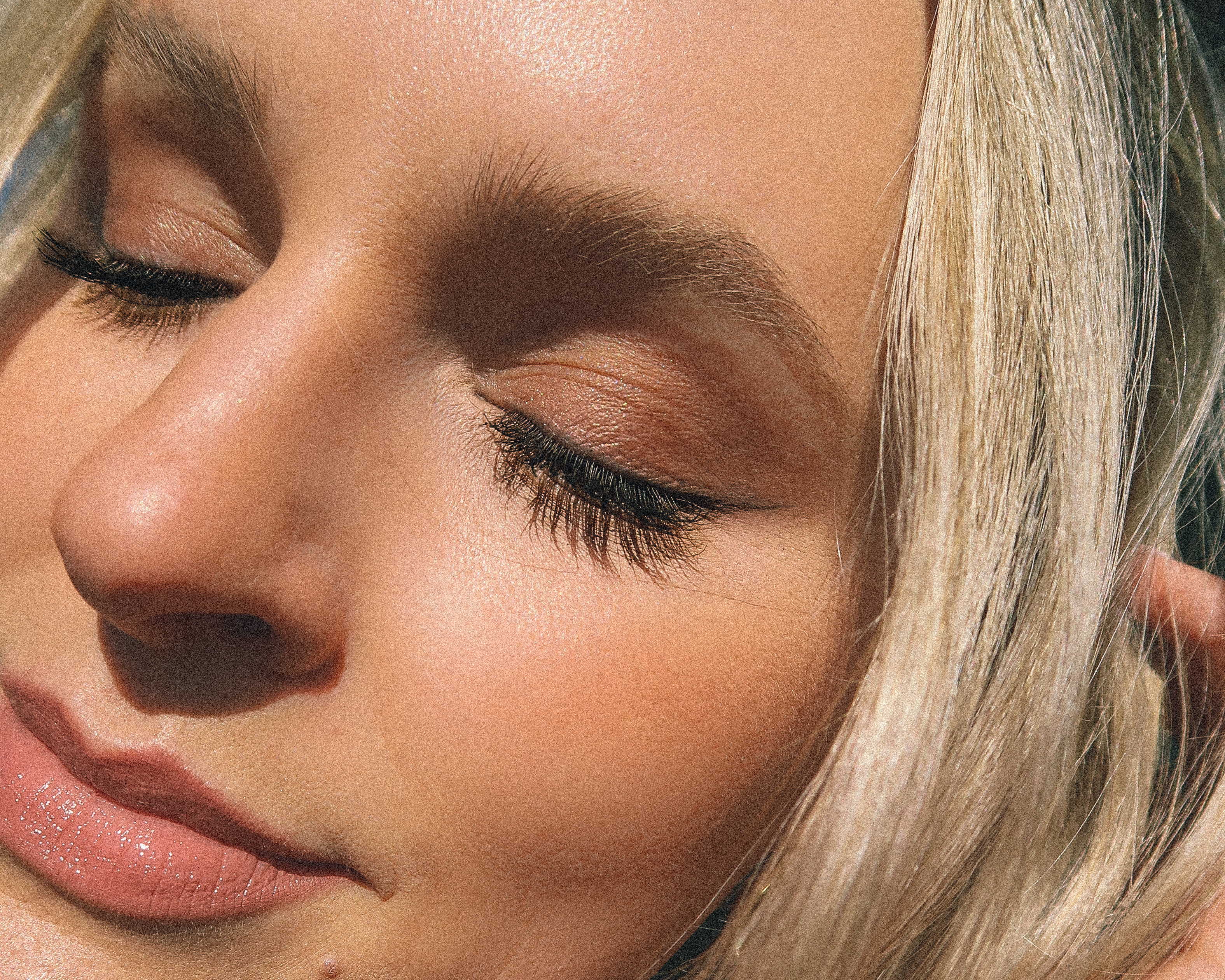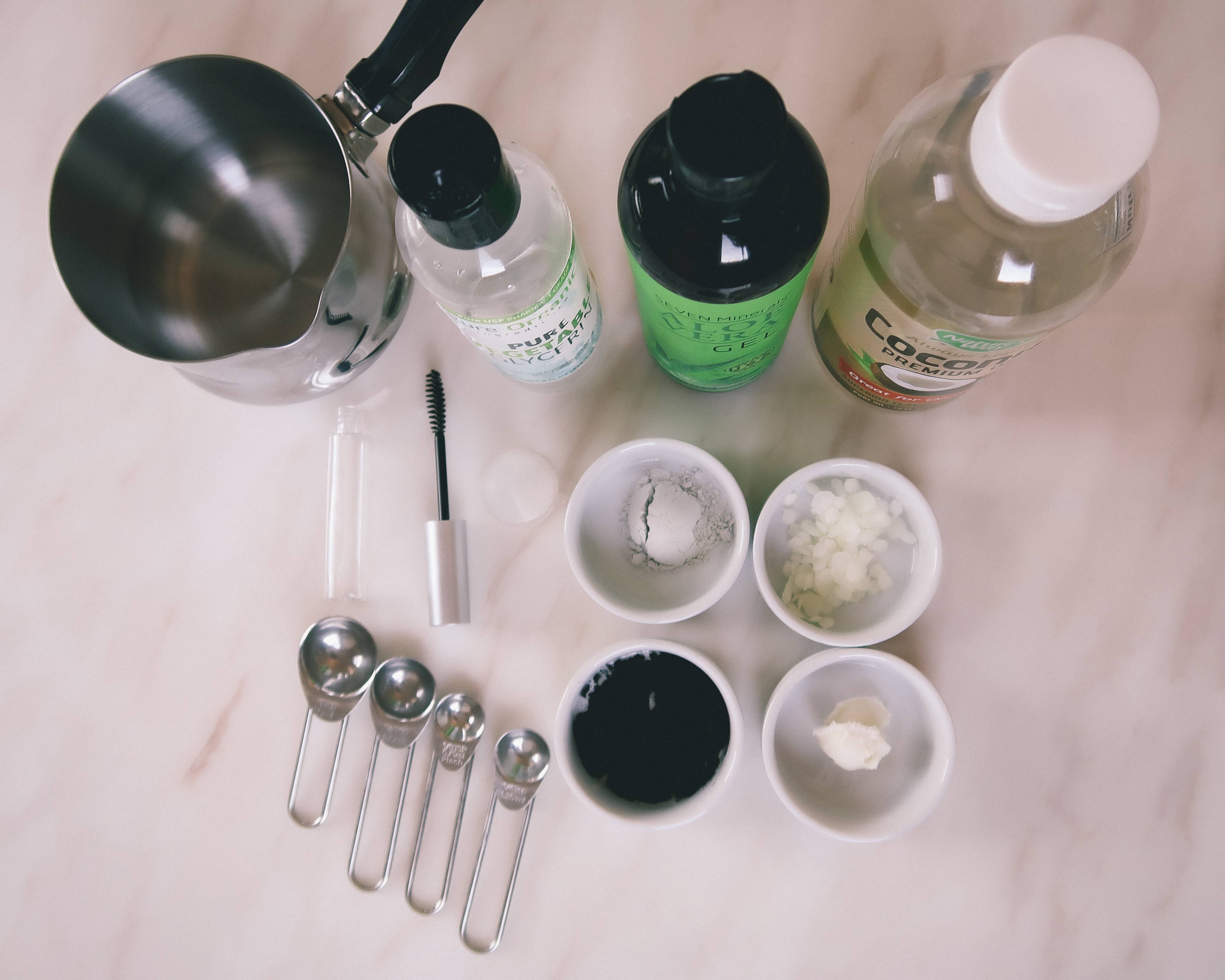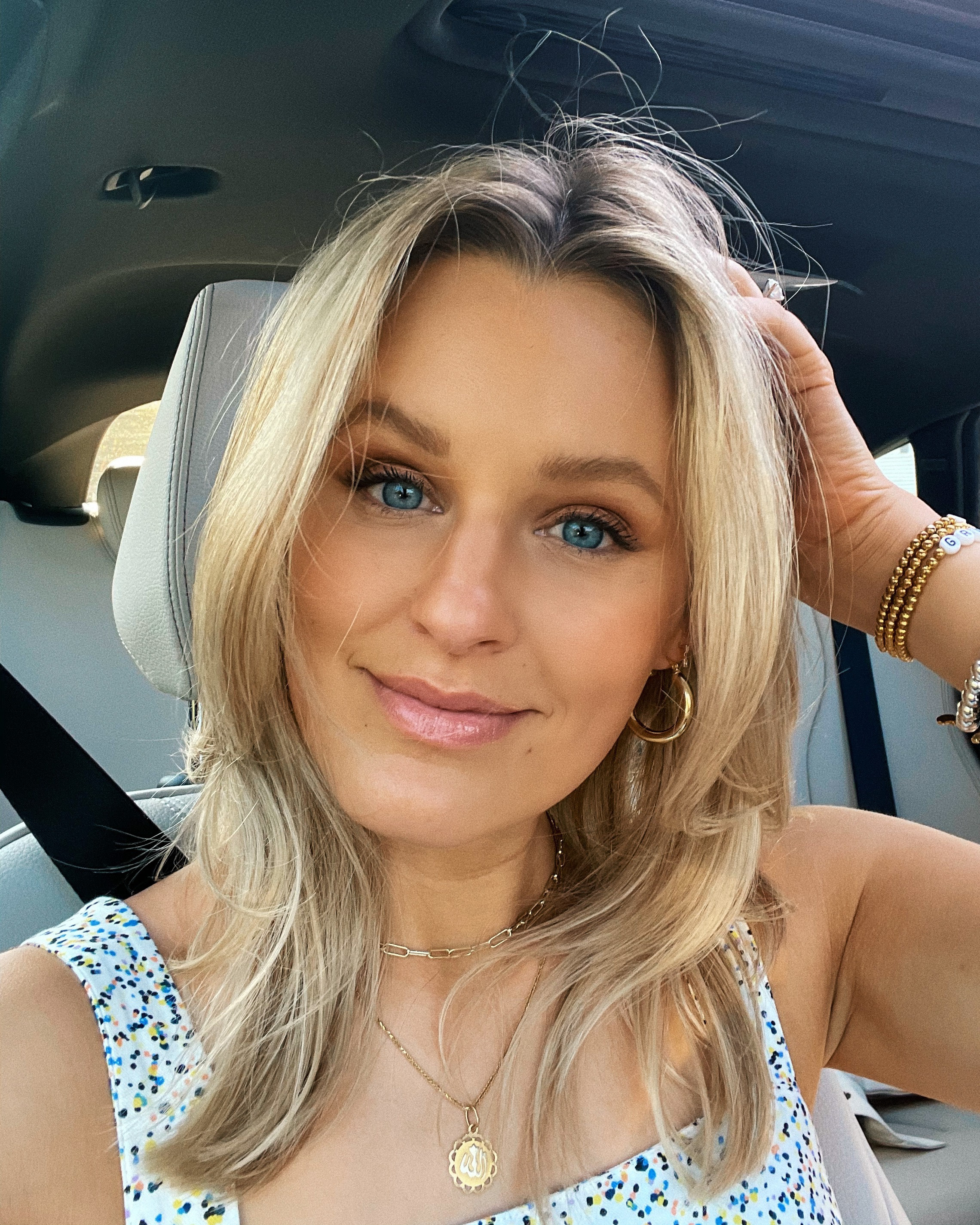
Clean beauty is a trend that’s here to stay. Are you interested in editing down your skincare and/or makeup routine to focus on nontoxic products? Have you ever considered making your own clean mascara? Here’s a recipe without any toxins commonly found in cosmetics (as well as some tips on which ingredients to avoid).
I tend to collect products like it’s my job, and every once in a while I have to go through it all and toss anything old or expired. I especially love my mascaras, so at any given time I’ll have several different tubes in my bathroom drawer. Sometimes they dry out, or sometimes they expire. Did you know you should toss any open tube of mascara after 3 months to avoid bacterial growth? In the past, I have certainly used the same mascara for 6+ months (so grossed out now that I think about it).
As I’ve edited my beauty and skincare routine to be more clean-focused, I’ve learned there are lots of chemicals in many popular mascaras that are actually quite toxic. The scariest part is that we’ve been putting these chemicals near our eyes (and undoubtedly IN our eyes, too). First and foremost, steer clear of carbon black (Uncertified D&C Black No. 2), which is a suspected carcinogen, can cause organ system toxicity and can be contaminated with heavy metals. (source: ewg.org). More ingredients to avoid below.
My Recipe
I’ve been making variations of this recipe for a few years. With homemade mascara, it’s always a trade-off between being too oily and too dry. When it’s too oily, it smears and smudges easily. When it’s too dry, it can flake off. Ideally, you want a finished product that is creamy and workable but will dry quickly and sit nicely on the lashes.

Ingredients
- 1 tsp charcoal powder
- 1 tsp bentonite clay
- 1/2 tsp beeswax
- 1/2 tsp shea butter
- 1 tsp vegetable glycerin
- 1 tsp liquid coconut oil
- 2 tsp aloe vera gel
*You should be able to get most, if not all, of these ingredients at your local health food store. If not, Amazon is always a good bet (links above are from Amazon).
Other Supplies
- Empty mascara tubes and clean wands (I like this set because they also come with little funnels)
- Measuring spoons (I recommend metal because the charcoal can be difficult to clean off plastic)
- Small melting pot (or you can use a small double boiler to avoid burning the ingredients)
- Rubber spatula
- Plastic baggie
- Toothpick or wooden skewer
Directions
- Add the beeswax, shea butter, vegetable glycerin, and coconut oil to the melting pot over low heat. Let the wax melt slowly. Be patient with this step as it can take up to 15 minutes or so. Stir gently using your wooden skewer.
- While the wax melts, mix the charcoal and bentonite clay together in a separate small bowl.
- Once the wax has melted completely, mix in the aloe vera gel. At this point, the beeswax may start to harden in small clumps from the cooler temperature of the aloe. Continue to stir the mixture over low heat until smooth.
- Add the charcoal and bentonite clay mixture to the pot and turn off the heat. Mix together until fully combined. You should have a rich, dark, and creamy mixture at this point.
- Use the rubber spatula to scoop the mixture into a plastic baggie (toward a corner of the bag).
- Cut a tiny hole in the corner and pipe the mascara mixture into your empty tube. You may need to use your toothpick or wooden skewer to push the mixture down and let any air pass through as you go.
- Let cool and you’re ready to apply!

Tips
When applying to your lashes, this mascara doesn’t glide on as thickly as other mascaras. Make sure to get enough product on the brush to coat your lashes. I recommend using lots of small strokes and applying multiple coats.
Toss your mascara tube out after about 3 months or so. It can be so easy to forget to do this, so make a note or set a calendar for 3 months from now. You should do this with purchased mascara as well. This should go without saying, but if it starts to develop a funny smell, TOSS IT!
To make clean-up easier: Pour a little coconut oil into the pot and put it back on the heat. The oil will help the hardened beeswax melt off the sides of the pot and make it much easier to clean.
Cosmetic ingredients to avoid
Other ingredients to avoid include parabens, phthalates, and fragrance. Parabens are almost impossible to get away from completely. They are ubiquitous, and some studies have shown that nearly all U.S. adults have detectable amounts of parabens in their systems (source: ewg.org). But since parabens are known endocrine disruptors, it makes sense to try to reduce exposure in our products, since we can’t completely eliminate environmental exposure. Parabens are typically used as a preservative to prolong the shelf life of products by staving off bacterial growth, so when using clean products, it is even more critical to replace them after 3 months.
Phthalates are chemicals used to soften plastics so they are more durable and are linked to a whole host of side effects. Despite being known endocrine disruptors, phthalates are in many personal care products. What’s even scarier is that lots of food products are also contaminated with them from plastic packaging (source: cdc.gov). Since it’s impossible to completely avoid phthalates, it’s important to cut back on exposure where possible.
Fragrance is a sneaky one! Since this is often considered a “trade secret,” companies can include a mixture of chemicals (often including parabens and phthalates!!) without listing out what those ingredients actually are. This one is tricky, but since so many of the chemicals in fragrance (or parfum) are known to cause skin irritation, allergies, respiratory distress, and hormone disruption, it’s best to avoid them (source: ewg.org).
Other options
If making your own mascara sounds kind of insane (trust me, I get it – I only do this every once in a while), here are some other clean mascaras I love and usually switch between: Ilia, Milk Makeup, and W3LL PEOPLE. Don’t get me wrong, sometimes you just feel like getting glammed up in your fave nonclean mascara, and that’s totally fine! If we can switch things up more often with a homemade or otherwise clean mascara, our bodies will thank us!
If you need help identifying which products are safe or clean and which ones you should avoid, the Think Dirty app breaks every ingredient down in every product imaginable. This way you can see which product are no-gos, and what specific ingredients are toxic. The EWG’s Skin Deep guide is also a very comprehensive database of every personal care product imaginable. If you are questioning any of your existing products, these two resources are great places to start.



